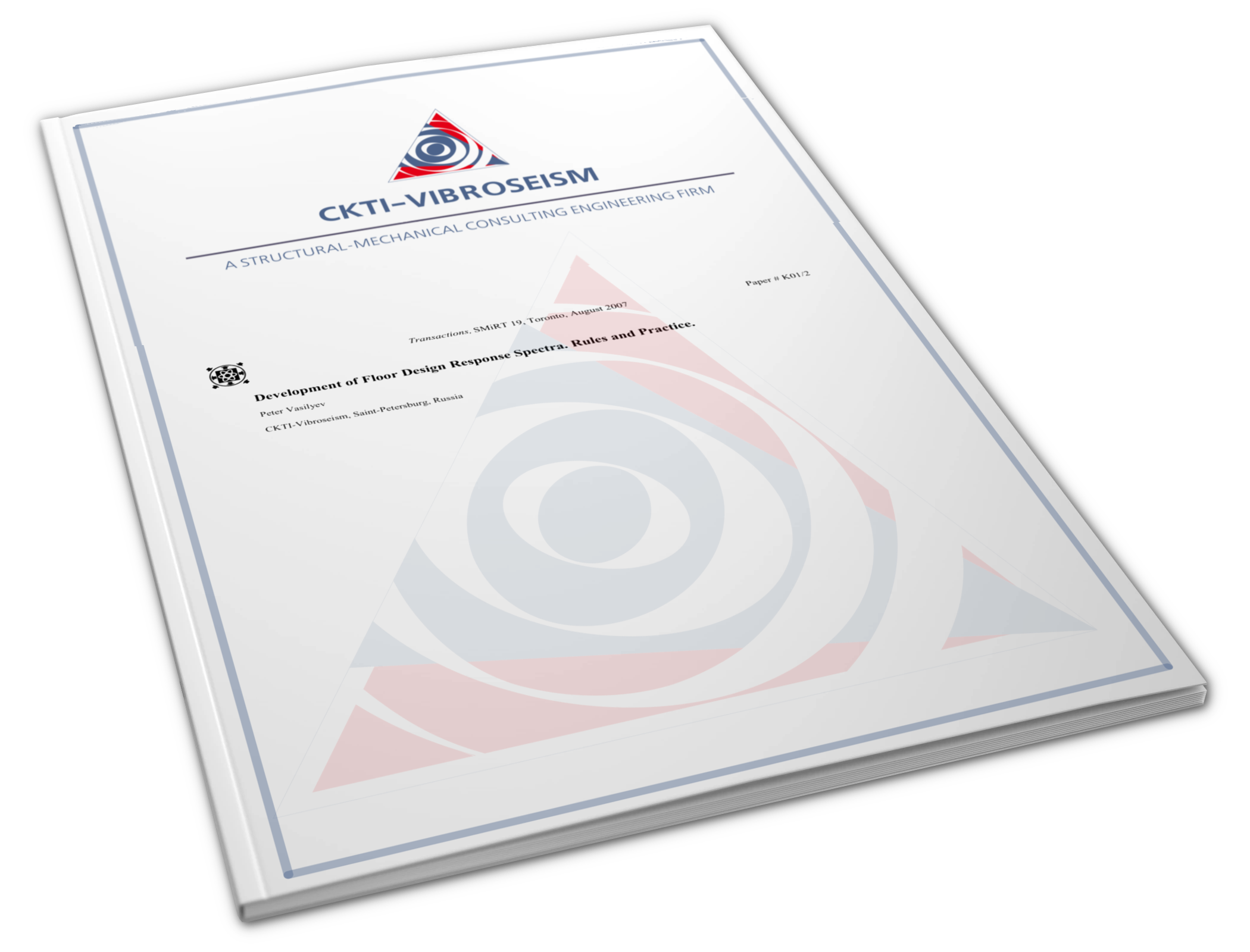Deprecated: AbookTableBook::_getAssetParentId(): Implicitly marking parameter $table as nullable is deprecated, the explicit nullable type must be used instead in /home/cvs-host/cvs.spb.su/docs/administrator/components/com_abook/tables/book.php on line 100
Development of Floor Design Response Spectra. Rules and Practice
SMiRT-19, Toronto, Canada, August 12-17, 2007, Paper N K01-2

- Авторы: : Васильев П.С. [Peter S. Vasilyev]
- Редактор: English
- Страницы: 8
- №: 21
- Библиотека: Conference Papers
- Год: 2007
- Файл: SMIRT19-K01-2
Просмотры: 2380
Most of NPP’s equipment and piping have to be designed to withstand the effects of earthquake. These components have to be verified by analysis or by experimental testing. Design Floor Response Spectra (FRS) usually represent an input seismic excitation for a floor supported equipment and piping. The development procedure for floor response spectra is described in a number of official documents. Among them is the US NRC Regulatory Guide 1.122 [1] recognized as the most comprehensive and competent one. Above-mentioned document (revision 1) is of February 1978.
Current practice for the development of floor design response spectra meets a number of problems and questions, which still have no answers in Standards and Guides used for Nuclear Industry. As a result, a structural engineer can make a decision, which can lead to essentially more or less conservative analysis without violation of the prescribed requirements. The presented paper is dedicated to discussion of the questions and problems connected with development of floor design response spectra. The paper also proposes some directions to improve the existing Codes and Regulations. Some problems, discussed in the paper, are specified below.
The damping level in the structure and in the soil has an essential impact on the response accelerations. In practice there are two general methods for calculation of nodal acceleration response time histories. Both of them have the own specific features and weak points for accounting of damping phenomenon.
Also there are two questions regarding the frequency range of FRS: upper limit (cut-off frequency) and a number and values of frequencies in a set. In practical calculations several variants of the soil properties, source seismic excitations and a number of the nodes should be considered for FRS generation. It means that Design Floor Response Spectra is a result of convolution procedure.
From the other hand, there are several ways how to do it.
The requirement of the soil characteristics variation is in some contradiction with the spectrum peaks broadening procedure. The spectrum peaks broadening procedure is intended for the uncertainties compensation. However, these uncertainties include soil characteristics among the other.
The highlighted problems are illustrated by the numerical examples using the finite element models of the actual nuclear related buildings.
 ООО «ЦКТИ-Вибросейсм»
ООО «ЦКТИ-Вибросейсм» 
